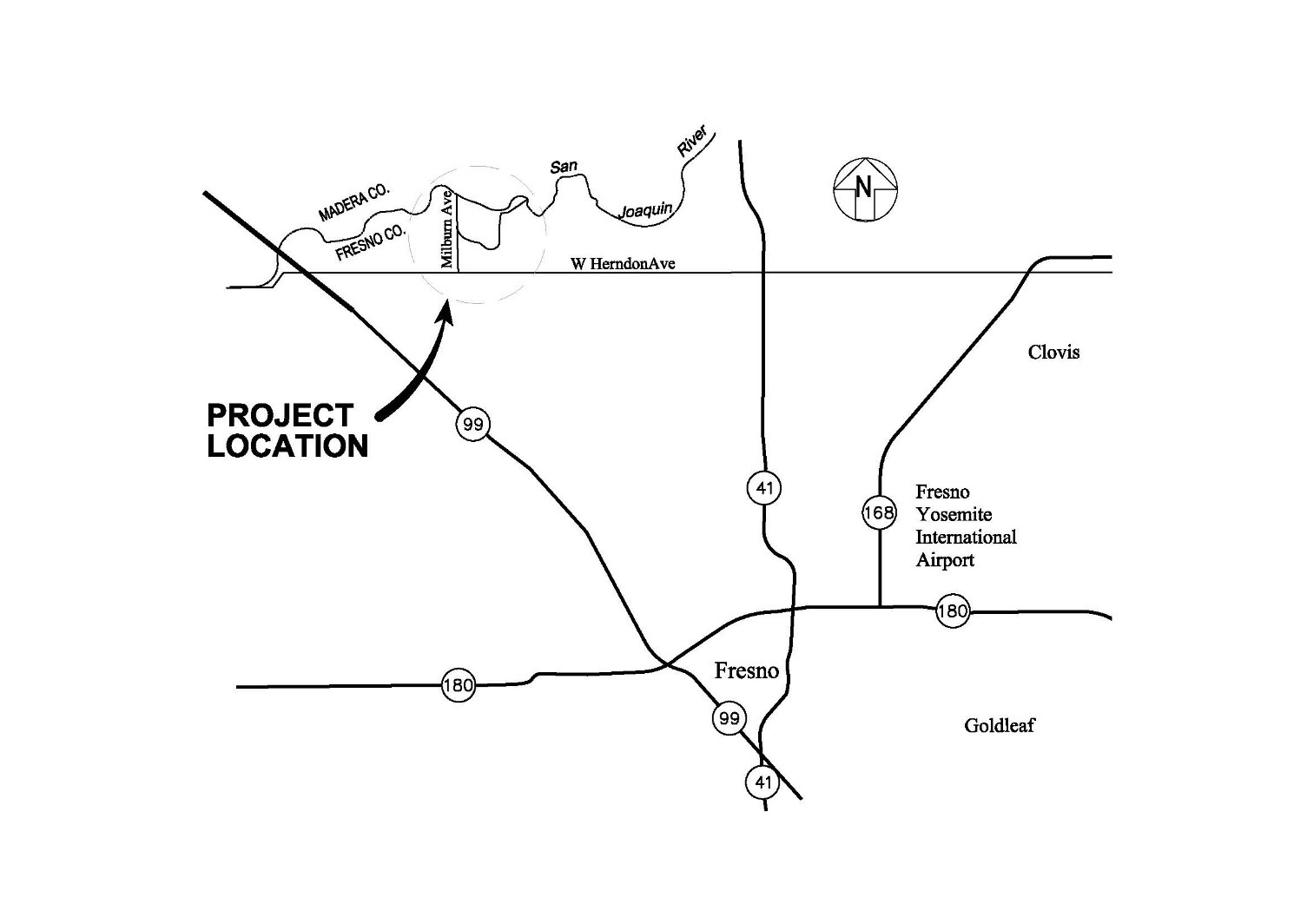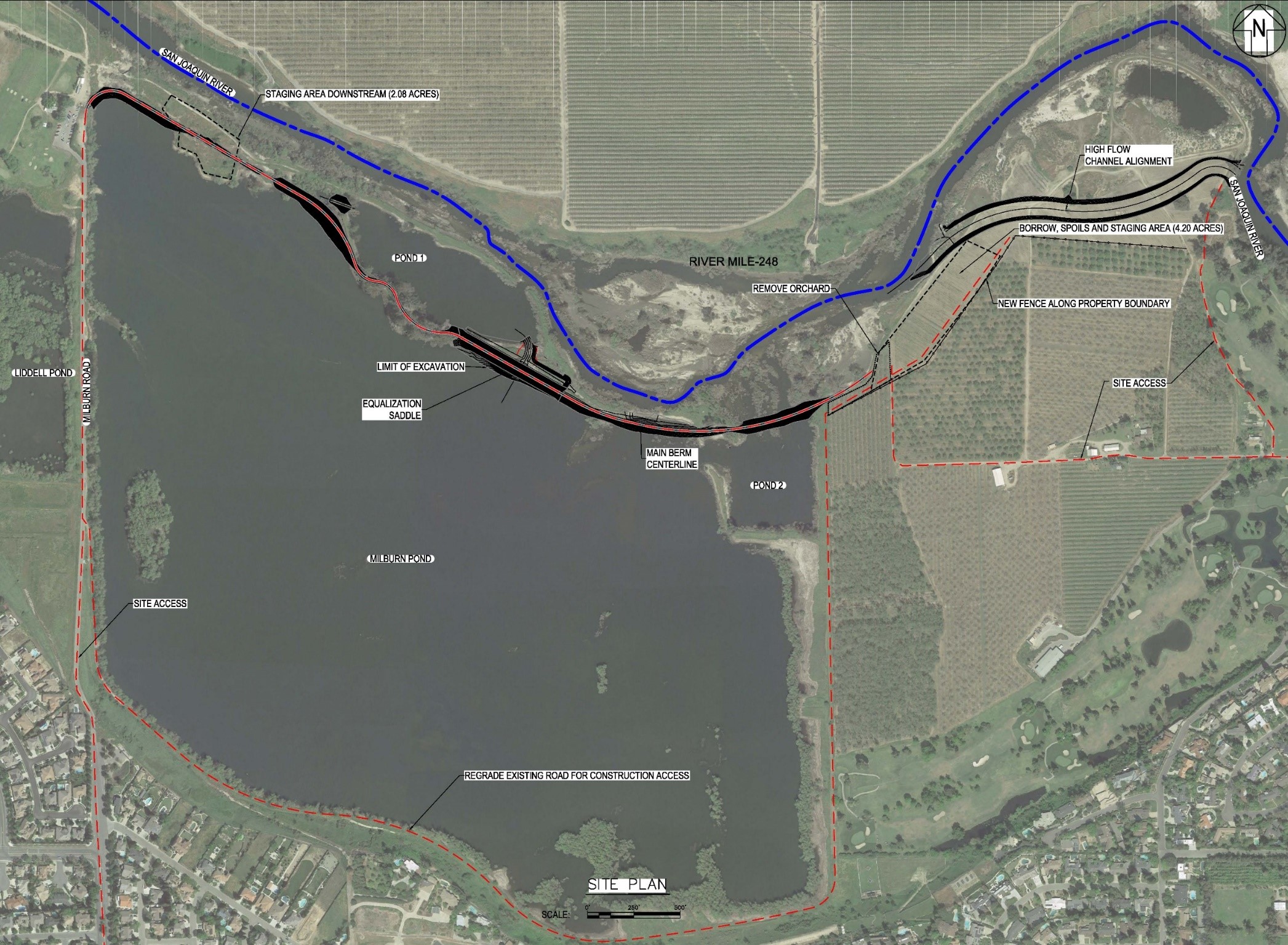NOP Scoping Meeting for the Milburn Pond Isolation Project EIR
Notice is hereby given that the California Department of Water Resources (DWR), as the Lead Agency under the California Environmental Quality Act (CEQA), will prepare an Environmental Impact Report (EIR) for the Milburn Pond Isolation Project (proposed project). A virtual public scoping meeting will be held via Zoom on Thursday, October 22, 2020, at 5 p.m. to receive comments on the scope and content of the EIR, as described below.
DWR invites each State responsible and trustee agency and each Federal agency to provide input as to the scope and content of the environmental information that is germane to the agency’s statutory responsibilities in connection with the proposed project. DWR also is accepting comments from members of the public and Native American tribes on the scope and content of the EIR, as well as suggested alternatives to the proposed project that may be considered in the EIR.
INTRODUCTION
CEQA specifies that a public agency must prepare an EIR on any project that it proposes to carry out or approve that may have a potentially significant or significant direct, indirect, or cumulative effect on the physical environment. DWR is proposing to implement improvements at the Milburn Unit of the California Department of Fish and Wildlife (DFW) San Joaquin River Ecological Reserve (Reserve) to increase native fish survival in the San Joaquin River. DWR has determined that these improvements may result in potentially significant and significant effects on the physical environment. Therefore, DWR will prepare a project-level EIR that evaluates the potential significant environmental effects of these proposed improvements.
PROJECT LOCATION
The project site is located in Fresno County and is bounded by the San Joaquin River to the north and the City of Fresno to the south (Figure 1). Privately owned agricultural land and the San Joaquin Country Club are adjacent to the upstream portion of the project site, and the San Joaquin River Conservancy (Conservancy) property currently leased to Bluff Pointe Golf Course and Learning Center is immediately downstream of the project site.
PROJECT DESCRIPTION
The proposed project would be the first phase of a potentially three-phase Milburn Habitat Restoration and Improvements Project. The EIR focuses on this initial phase because it has independent utility, must be completed prior to future phases, and its design has been funded and initiated; later phases are conceptual, do not yet have funding, and may not necessarily be implemented.

The proposed project would isolate the abandoned gravel pit known as Milburn Pond from the San Joaquin River channel to increase native fish survival by reducing movement of non-native warmwater fish species from the pond to the river and movement of native salmonids from the river to the pond.
This would be accomplished by modifying the existing berm to fill existing breaches, strengthen weaker berm sections, and raise elevations of low-berm sections to minimize the potential for future breaches. Additional fish habitat improvements would include: constructing an equalization saddle structure within the berm to equalize Milburn Pond with the river during flow fluctuations, installing a modified French drain beneath the saddle to ensure water flow into Milburn Pond during low-flow conditions, creating a new high-flow side channel, and planting trees and other vegetation. The project would also install rock slope protection and biotechnical erosion protection to minimize erosion and would improve an existing access route along the southern and eastern boundary of Milburn Pond. Potential additional project components include modifying the portion of Milburn Avenue adjacent to the Reserve by raising the road berm elevation in low areas to avoid premature overtopping during flood releases from Friant Dam. Fencing, gates, and signage may also be installed along currently unfenced portions of the Reserve. The current site plan is provided as Figure 2, at the end of this document.
The EIR will analyze the potential environmental effects of construction, operation, and maintenance associated with the proposed project, the No-Project Alternative, and at least one other alternative. The proposed project and the alternatives will be defined, refined, and adjusted based on the information gathered during the scoping and environmental review processes, as well as through the continuing refinement of the engineering design.
PROBABLE ENVIRONMENTAL EFFECTS
The environmental analysis will focus on examining the potential environmental impacts associated with the improvements implemented as part of the proposed project and identifying feasible measures and alternatives that can be implemented to avoid, minimize, rectify, reduce, or compensate such impacts. The EIR will also evaluate cumulative effects of the proposed improvements when considered in conjunction with other related past, present, and reasonably foreseeable future projects.
Based on preliminary evaluations, the EIR is not anticipated to address the following resources, because there is no potential that these resources would be significantly impacted by the proposed project:
- Energy. Project implementation would not include wasteful or unnecessary consumption of energy resources, because it would be required to meet air quality and greenhouse gas criteria that require the use of efficient equipment. The project would be constructed within one field season using efficient equipment. Because the project would not change operations and maintenance from existing conditions, it would cause no long-term impacts to energy resources and would not conflict with renewable energy or energy efficiency plans. Consequently, the proposed project would not have the potential to cause a potentially significant impact on energy resources.
- Mineral Resources. The project site is designated MRZ-1 in the Fresno County General Plan; an MRZ-1designation means that adequate information indicates that no significant mineral deposits are present on the project site. Therefore, the proposed project would not result in the long-term loss of access to regionally or locally important deposits of mineral resources.
- Population and Housing. The proposed project does not include housing or commercial development that would directly or indirectly induce population growth. Project construction would occur in an undeveloped area, would not displace people or housing, and would be completed by local construction workers that would not need temporary housing. Consequently, the proposed project would have no impact on population and housing.
- Public Services. The proposed project would not require any new or increased public services. Moreover, the proposed project would not have any or only minimal effects on existing public services. The proposed project would be constructed within DFW’s Reserve, which does not have public services that could be adversely affected. Consequently, the proposed project would not have the potential to cause a potentially significant impact on public services.
- Utilities and Service Systems. The proposed project does not require utility services and would not generate waste in excess of standards or infrastructure capacity. Consequently, the proposed project would have no impact on existing or future utilities and service systems.
Based on preliminary evaluations, the proposed project could have the following probable direct, indirect, and/or cumulative environmental effects:
- Aesthetics. Temporary changes in scenic views or visual character of the Reserve during construction, and potential long-term changes to aesthetics from modified berms and tree removal.
- Agriculture and Forestry Resources. Conversion of a small amount of farmland and woodland removal and restoration.
- Air Quality. Temporary, short-term increases in pollutant emissions associated with construction activities.
- Biological Resources – Aquatic. Short- and long-term effects on aquatic resources in the San Joaquin River and Milburn Pond, including special-status fish species and their habitats.
- Biological Resources – Terrestrial. Short- and long-term effects on terrestrial habitats, including wetlands, and special-status terrestrial species in the Reserve.
- Cultural Resources. Potential disturbance or destruction of known or unknown historic or archaeological resources during construction.
- Geology, Soils, and Paleontological Resources. Temporary and short-term increases in erosion during construction and potential disturbance or destruction of known or unknown paleontological resources during construction.
- Greenhouse Gas Emissions. Temporary, short-term increases in greenhouse gas emissions associated with construction activities.
- Hazards and Hazardous Materials. Potential introduction of contaminants into water courses and exposure of construction workers to hazardous materials during construction activities.
- Hydrology and Water Quality. Potential short- and long-term transport of sediments and other pollutants into water courses and potential effects on flood conveyance and flood control.
- Land Use and Planning. Potential conflicts with land use plans and zoning designations.
- Noise. Temporary and short-term increases in noise levels near sensitive receptors during construction.
- Recreation. Temporary and short-term disturbance of land-based recreational activities in areas adjacent to construction sites, and; long-term impacts to water-based recreation from isolating Milburn Pond from the San Joaquin River.
- Transportation. Temporary and short-term disruption of traffic or emergency access by haul truck traffic during construction.
- Tribal Cultural Resources. Potential disturbance or destruction of known Tribal cultural resources during construction.
- Wildfire. Temporary, short-term increase in wildfire risk associated with construction activities.
ALTERNATIVES
The No-Project Alternative and at least one other alternative to the proposed project will be evaluated in the EIR in accordance with CEQA and the State CEQA Guidelines. DWR conducted preliminary evaluations of potential alternatives as part of the preliminary design process to develop the proposed project and is currently identifying feasible alternatives that could reduce at least one potentially significant impact of the proposed project.
SCOPING MEETING
A virtual public scoping meeting will be held via Zoom on Thursday, October 22, 2020, at 5 p.m. The objective of the meeting is to brief interested parties about the proposed project, and obtain the views of agency representatives, interested parties, Native American Tribes, and the public on the EIR scope and content, including alternatives to be addressed and potentially significant environmental impacts.
Access to the virtual public scoping meeting is available at: https://zoom.us/j/96186673204?pwd=MlhHdFRtVGZLTDEyWDRjdEFnWk41UT09
Access is also available by telephone at 669-900-9128.
WRITTEN COMMENTS
This Notice of Preparation is being circulated to obtain suggestions and information from interested parties, including responsible and/or trustee agencies, Native American Tribes, and members of the public, on the content and scope of issues that may be addressed in the EIR. Written comments from interested parties are invited to ensure that the full range of issues related to implementation of the proposed project is identified early in the CEQA process. Agencies organizations, Native American Tribes, and interested parties should provide a contact name and information in their letters. All comments received, including names and addresses, will become part of the official administrative record and may be made available to the public.
Written comments on the scope of the EIR must be received by DWR no later than 5 p.m. on Friday, November 6, 2020. Written comments must be sent to:
Karen Dulik, Environmental Program Manager
California Department of Water Resources
South Central Region Office
3374 E. Shields Ave., Fresno, CA 93726
or via email to: Karen.Dulik@water.ca.gov
Interested parties may also provide written or oral comments on the proposed content and scope of the EIR at the public scoping meeting listed above. If you submit comments on the document, you will automatically be added to the distribution list for future notices and information about the environmental review process for the proposed project. If you do not wish to submit comments on the scope and content of the EIR, but would like to be added to the mailing list, you can submit your contact information, including email address, with a request to be added to the mailing list at the contact above.

